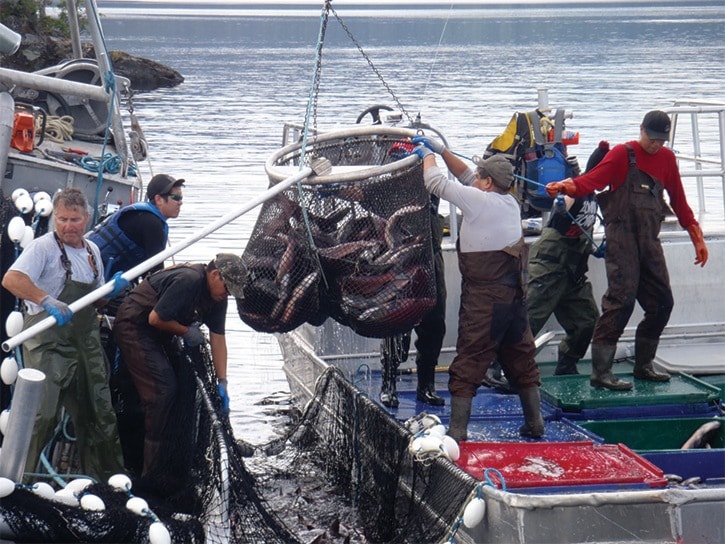A recent University of Northern British Columbia study has found a significant reduction over time of snowpack accumulations across the Fraser River basin and an earlier onset of the melt.
Snowpack reduction implies a reduction in the contribution of snow to streamflow generation, which results in lower flows in summer.
Professor of Environmental Science, Dr. Stephen Dery, explained that up-river salmon migrations occur in summer and fall, and lower flows in the Fraser River are often associated with warmer water temperatures that affect the health of salmon. Dery explained that snowpacks work as 'thermostats,' releasing cold water into the environment, important for many fish species including salmon.
The harvest of salmon is particularly important for Lake Babine Nation.
The Skeena sockeye return was significantly late last year. Even with the improved salmon count estimated at 1.16 million in September 2015, last year’s sockeye return was still drastically lower than the pre-season estimate of over three million.
Dery said a combination of factors may have led to those diminished returns in the Skeena watershed last year. He said one major factor was the “warm blob” in the northeastern Pacific Ocean, a patch of water 2-3 C warmer than usual.
“It’s hard to pinpoint last year’s low return to diminished snowpack,” he explained. “However, given the dry summer, water temperatures were certainly higher than normal and may have impacted the migrations.”
The new study showed a 19 per cent decline in mountain snowpack’s contribution to Fraser River discharge (at Hope) over 1949 to 2006. Coupled with warmer air temperatures, this leads to a 10-day advance of the spring snowmelt pulse in the Fraser River.
Changes in the hydrology of the Fraser River can not only affect aquatic habitat for salmon, but also for white sturgeon, trout and other important fish species. Changing snowpacks also have an impact on mountain caribou, since they rely on deep snow to reach arboreal lichens as a food source.
Dery said similar patterns can be expected in the Burns Lake area, including smaller annual accumulations of snow and earlier spring melt and freshet (snowmelt pulses in rivers/creeks).
In addition, there is indication that the Fraser River is now transitioning from a snow-dominated regime to “hybrid” one, in other words, heading more towards a rainfall-dominated system. Drivers of change are rising air temperatures and changes in the amount of snowfall despite no change in overall annual precipitation amounts.
Dery said that although global warming is the main cause of these trends, it may not be the sole factor. He says changes in land cover such as deforestation may also have an impact on earlier snowmelt.
According to the study, projections to estimate future changes in the Fraser River - up to 2070 - suggest future onsets of springtime snowmelt nearly 20 to 25 days earlier than the present onsets. The study says this will produce more winter and spring runoff for the Fraser River main stem at Hope, and earlier recessions to low flows in summer.
